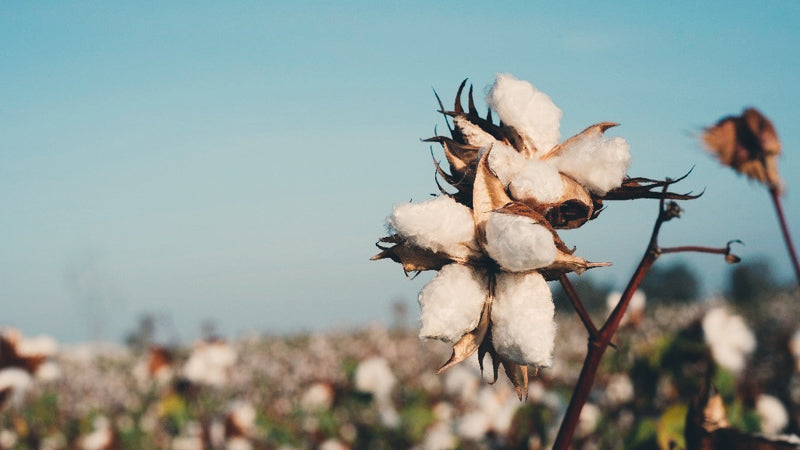Every now and again Oli and I play a game together. We pretend to be aliens, stepping off our UFO onto planet earth. We’re looking around at these unfamiliar sights and questioning what we see, asking the question “Isn’t it weird that…?”. I’ll give you some examples. Isn’t it weird that we are obsessed with going to these indoor spaces to move our bodies around and sweat? Isn’t it weird that we’ve got these animals in our houses which we attach to long pieces of string so they can walk around in a different environment? Isn’t it weird that this small rectangular card and its 3-digit number on the signature strip means I can eat, drink, buy a new notebook, travel?
You can get into a really strange state of mind if you do this for more than five minutes. One thing that alien would definitely be baffled by is how the fashion industry works. We buy 60% more clothing now than we did 15 years ago, and we keep these clothes for half as long. We literally wear plastic, with 60% of garments now being made from polyester, a figure that has doubled since the year 2000. We can buy a t-shirt for less than the price of a cup of coffee. We send 11 million items of clothing to landfill every week. And 40% of garment workers in Bangladesh have seen a fire in their factory. It’s bonkers.

I had never fully understood the term ‘supply chain’. I heard it for the first time when I was working at Accenture five years ago – if you were lucky you could work on projects ‘optimising supply chains’. I didn’t know what this really meant, all I knew was that I needed to avoid those projects. I still hate the term. Unnecessarily complex, long and confusing, concealing what is actually going on. It’s ironic that, five years later, seeing ‘supply chains’ in action on the ground in Peru, I realise that this is exactly what they are.
Global fashion supply chains are complex and long. Take a t-shirt for example. It typically starts its journey in the ground as a cotton seed, in China let’s say, where most of the world’s cotton grows. Six months until it grows into a cotton plant, maybe shorter if you’re using chemicals to speed up the process. To the ginning factory to get the cotton cleaned. Numerous other steps follow before you end up in the garment factory, the step we’re all more familiar with since the Rana Plaza factory collapse in Bangladesh and the spotlight that’s since been shone on poor and vulnerable garment workers worldwide, mostly thanks to the #whomademyclothes campaign. After rounds of samples, then on to the country’s port or airport. Shipped to the brand. Then to the wholesalers like John Lewis or Selfridges. Or direct to the customer. Finally it’s in your hands. Of course, if you’re anything like us before we peered under the bonnet of the fashion industry, you don’t consider this long journey that that item has been on. These convoluted and opaque fashion supply chains can be very problematic. It means vulnerable individuals are invisible and powerless, wrongdoings go unnoticed and those in charge escape accountability.

We start in the cotton fields, unlike most clothes companies. The usual approach to launching a clothing brand is to either go direct to the garment factory (already several steps down the supply chain) or to work through a network of agents and middlemen. They live in the country where you want to manufacture the clothes and they will try to find you the cheapest and fastest supplier. As we discovered, this is how the global fashion industry is currently programmed. Unless you make a concerted effort, you could quite easily sit comfortably in London or wherever you are in the world and be disconnected from the entire process. This is the status quo in today’s fashion industry.
Last year’s Fashion Transparency Index, which ranks 200 of the biggest fashion companies globally like Adidas, Patagonia and H&M, found that only ten companies knew their raw material suppliers. This was up from one company in 2019 and zero in 2018 (!). We start in the cotton fields, unlike most clothes companies, because we believe this is the most important step in the entire supply chain. After all it’s the cotton farmers that are responsible for growing the raw material in the first place. And when we talk about fashion supply chains and different materials, it remains the case that a lot of the time we are still talking about cotton. About 75% of all clothes globally contain cotton. There are some fascinating fabrics emerging, bananatex made from bananas, pinatex made from pineapples…but cotton remains the oldest used fibre and the most important non-food crop in the world.

We don’t think cotton farmers get the attention they deserve. So for us at NINA it’s all about the cotton farmers and the cotton they proudly grow. With this in mind we are excited to build a clothes company that just makes sense - Making organic pima cotton baby clothes and sustainable baby products which make fantastic ethical baby gifts and reward everyone in the supply chain properly.
We are doing all we can to be sustainable and ethical. All this really means is that we are trying to create something good and responsible, with tomorrow and the next generation in mind. In order to do this, we all need to start in the cotton fields.


